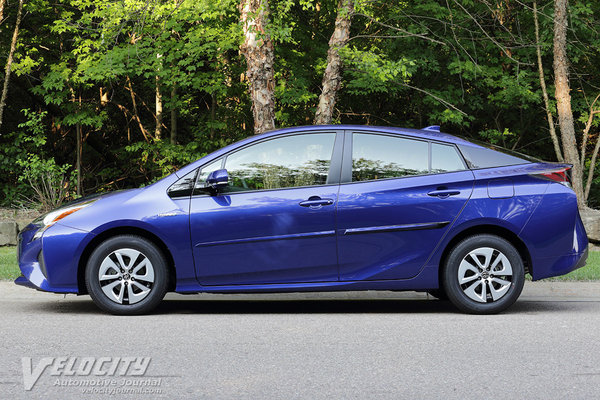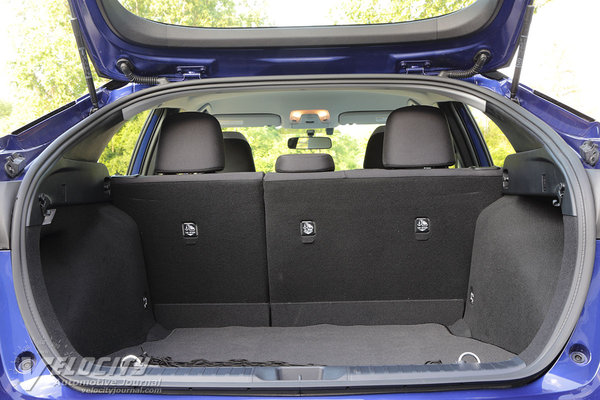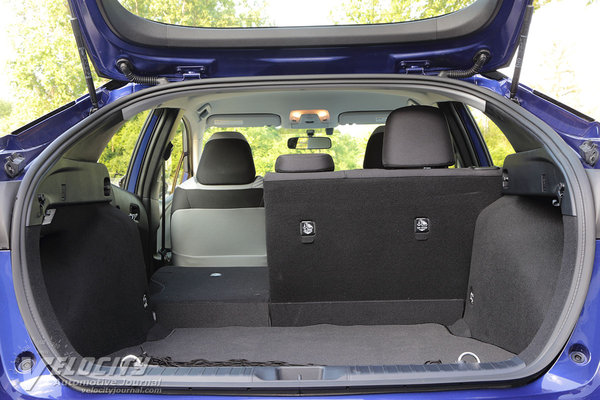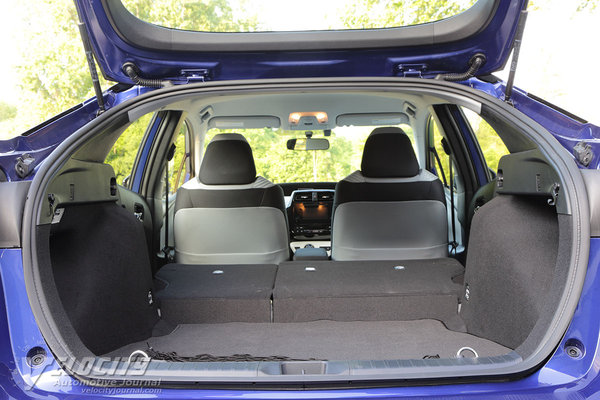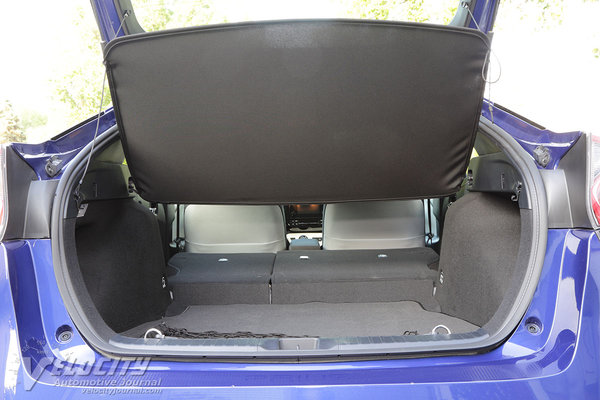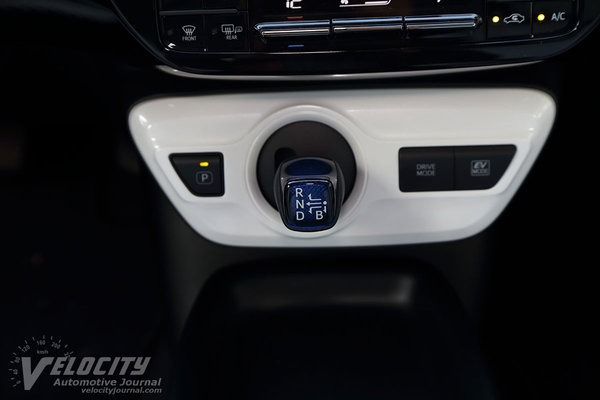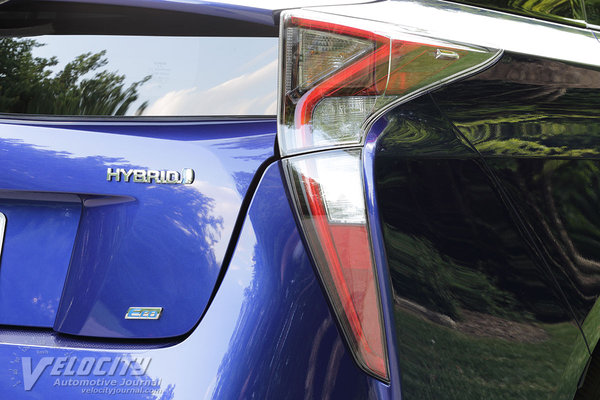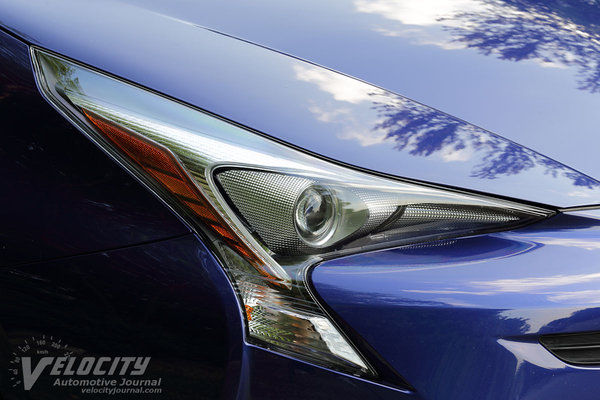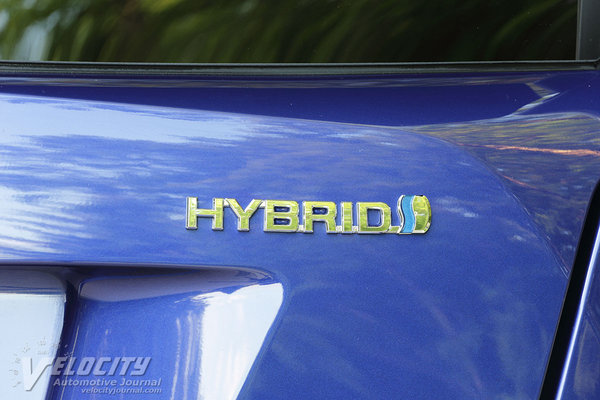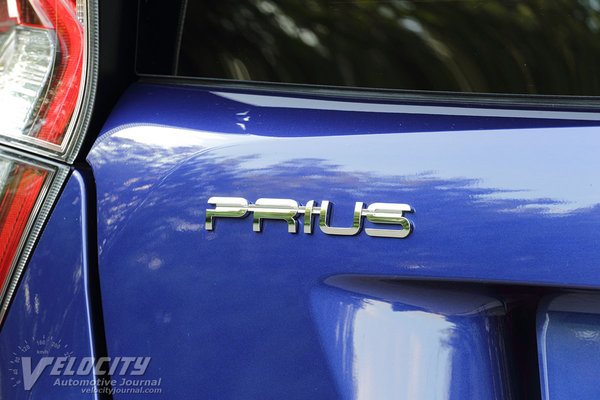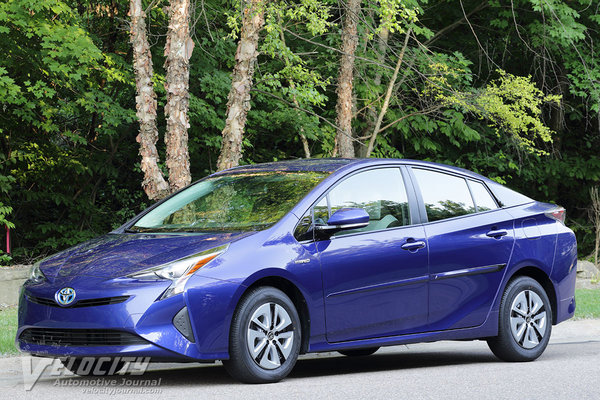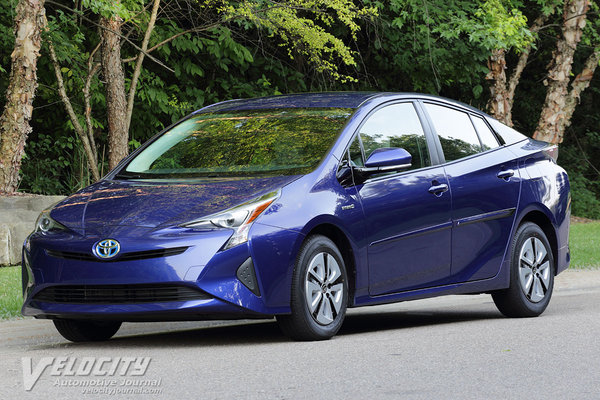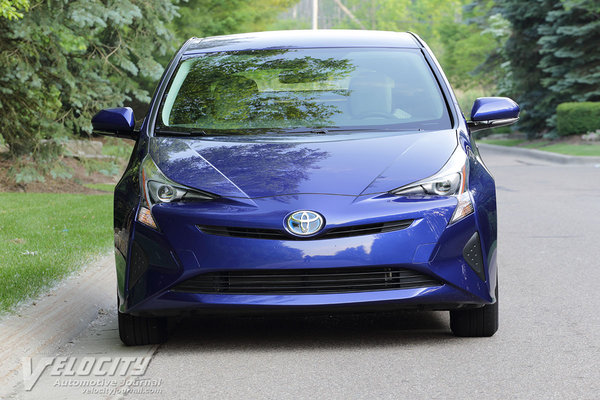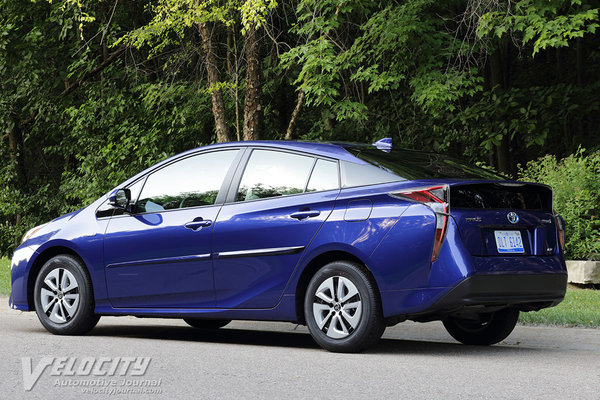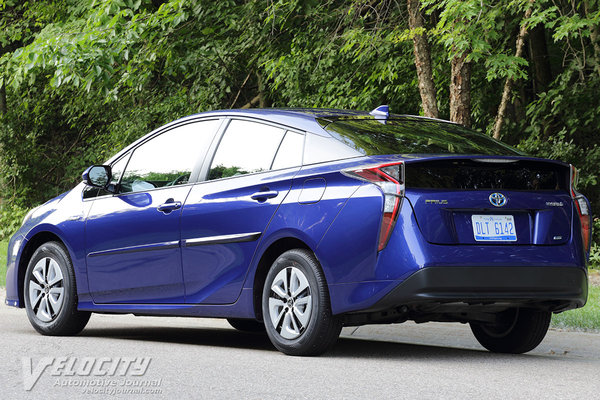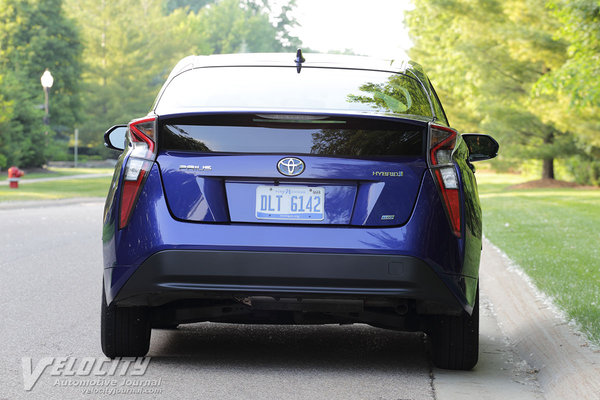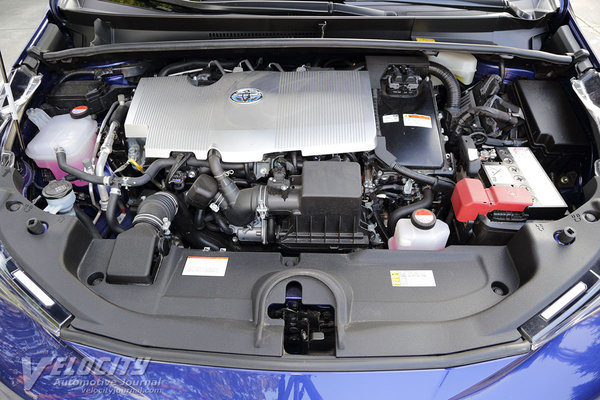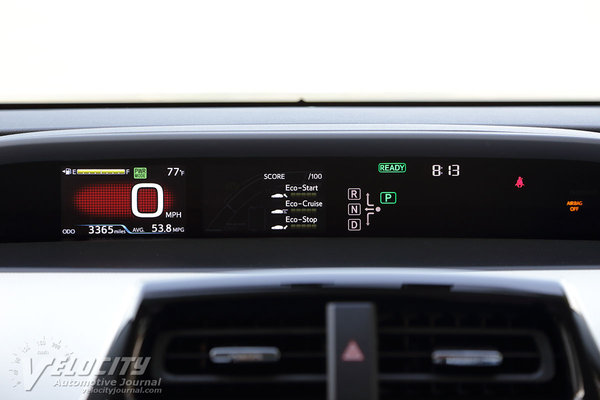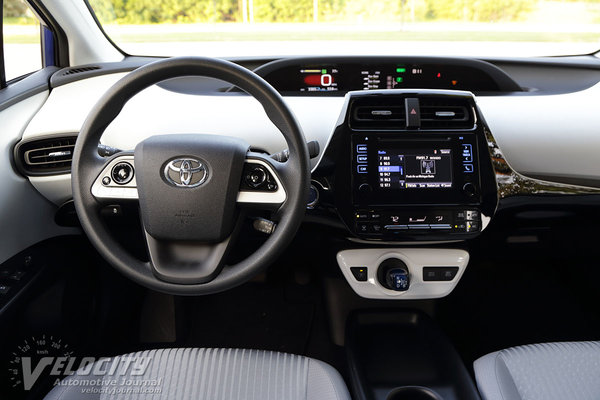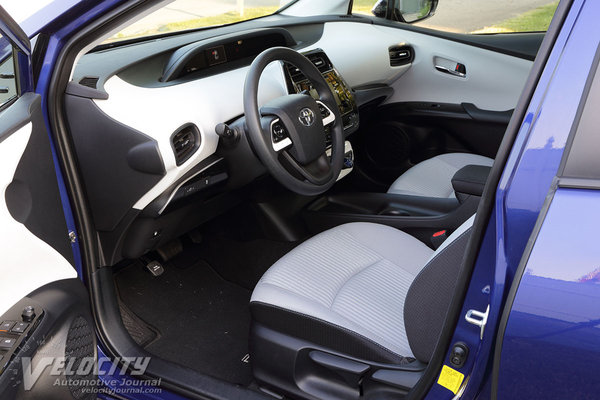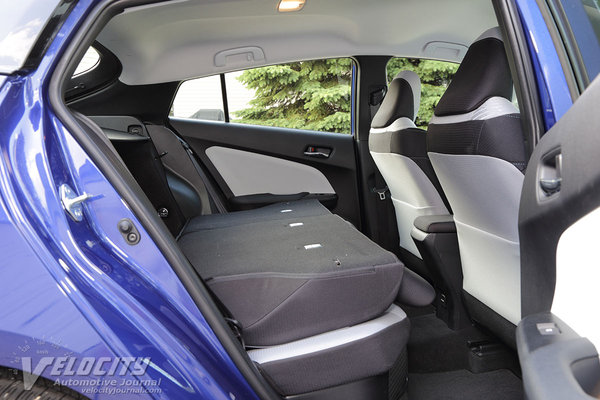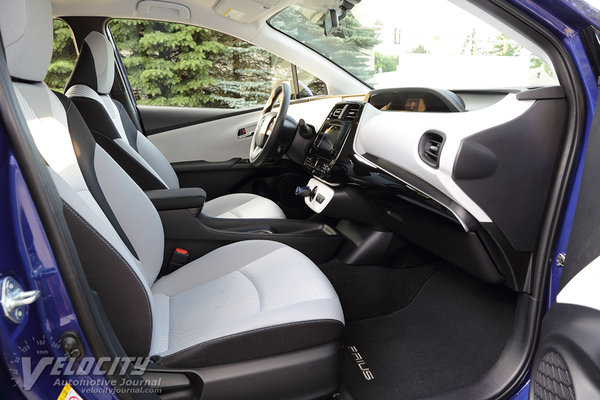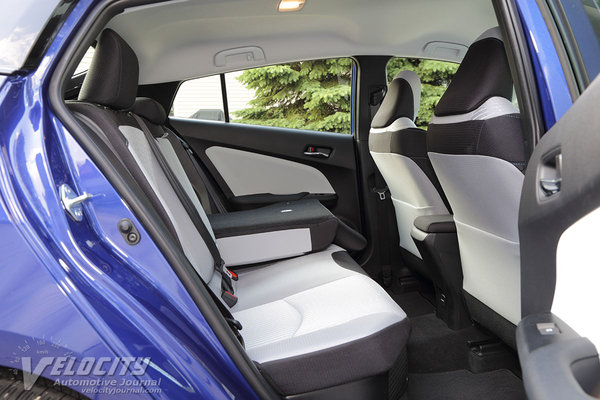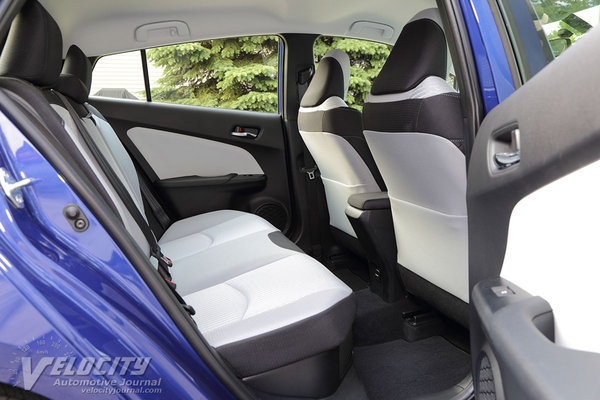2016 Toyota Prius 2 Review
09/22/2016
Shahed Hussain
In the current era of cheap gas, is the Prius still relevant? Hybrid vehicle sales wane as fuel prices drop. But as governments worldwide focus on reduced carbon dioxide emissions, hybrids continue to be an essential part of an automaker's vehicle lineup.
Toyota introduced the fourth generation Prius in late 2015, and has expanded the range to six models: Prius Two, Two Eco, Three, Three Touring, Four, and Four Touring. We tested a 2016 Prius Two Eco ($24,700), just above the entry level Prius Two. Adding up the options: floor mats ($225), cargo net ($49), rear bumper applique ($69), door edge guards ($125), wheel locks ($65), body side molding ($289), and delivery ($835) raised the total to $26,357. Toyota has released the 2017 Prius with pricing for the base 2017 Prius Two at $24,685 and ranging up to the Prius Four Touring at $30,015. A 2017 Prius Two Eco now has a MSRP of $25,165.
An "Eco" model is expected to be frugal, so the Prius Two Eco is the most fuel-efficient model in the lineup. The Two Eco achieves an EPA mileage rating of 58/53 MPG (city/hwy.) vs. 54/50 MPG (city/hwy.) for all other Prius variants. Contributing to its superior efficiency is a curb weight of only 3,010 lbs., forty to seventy pounds lighter than other Prius models. Contributing to the weight loss is the deletion of spare tire and the substitution of a tire repair kit. We averaged between 46-60 MPG depending on miles driven and average speed, so the EPA estimates seem reasonable.
All Prius models are powered by a 1.8L all-aluminum Atkinson cycle inline-4 with dual overhead cams and variable valve-timing (VVT-i). Toyota rates power output of 95-bhp @ 5,200 RPM and peak torque of 105 lb.-ft. @ 3,600 RPM. The 53-kW (71-bhp) AC synchronous electric motor adds 120 lb.-ft. of torque and boosts total hybrid system power to 121 bhp. Toyota uses a 6.5 amp-hr. nickel-metal hydride and 3.6 amp.-hr. lithium-ion 600V batteries to power the electric motor. Coupled to the gasoline engine and the electric motor is an electronically controlled CVT (continuously variable transmission) that drives the front wheels.
Replacing the semi-independent torsion beam rear suspension in the previous Prius, Toyota installed a double wishbone setup with coil springs, dampers and a stabilizer bar. At the front are MacPherson struts and a stabilizer bar. Disc brakes are at all four wheels with an integrated regeneration system that charges the batteries. Steering is a via an electrically-assisted rack-and-pinion system. P195/65R15 Dunlop Enasave all-season tires are mounted on 15-inch diameter alloy wheels with wheel covers.
The Prius continues its tradition of simple, functional interior design, but with upgraded materials. Most surfaces are soft touch plastic. As before, a central instrument cluster shows a digital speedometer along with a multi-function display showing hybrid system status and fuel consumption. To encourage efficient driving, the trip computer records fuel consumption per trip. A touchscreen controls most infotainment functions, but audio volume and tuning knobs allow quick adjustments without distraction. Toyota relocated the shift lever to the center stack, convenient yet unconventional. Next to the shifter is a button to engage the EV mode that switches the Prius to exclusively electric drive. The steering wheel has duplicate controls for audio, phone and infotainment system, but the roughly textured plastic wheel rim is a disappointment. Analog audio and USB inputs are on the center console. A storage bin is located under the center armrest.
The front seats provide a balance of comfort and lateral support with manual six-way adjustments for the driver and a basic 4-way adjustability for the passenger. Rear occupants benefit from decent legroom and comfort, but headroom is limited for passengers over 6 ft. tall. An outlet on the center console supplies 12V power for portable electronics.
Toyota has focused on fuel efficiency above all, but the new Prius now offers a driving experience closer to a typical compact sedan. Ride comfort is superior to the previous Prius, no doubt due to the independent rear suspension that replaced the torsion beam axle. The electrically-assisted steering is reasonably precise with moderate effort. Steering turn-in response is somewhat delayed, likely because of the low rolling resistance Dunlops. Moderate understeer and significant body roll around curves confirms that the Prius has no sporting intentions. The regenerative braking system engages as necessary to recharge the battery, but sometimes this affects the conventional hydraulic brakes as the Prius decelerates faster than expected.
Driving on the highway, the Prius tracks steadily at 80 MPH. The suspension absorbs frost heaves and potholes and requires minimal steering correction. Wind and tire noise are subdued, and the CVT keeps engine revs low while cruising. At full throttle, the CVT adjusts engine RPM to balance efficiency and acceleration. The inline-4 tends to drone and buzz at full throttle, but we suspect that most Prius owners are more concerned about minimizing fuel consumption than maximum performance. For silent running at up to 10 MPH, the Prius EV mode can be engaged for short distances (up to about ¼ mile in our experience); the duration in EV mode depends on the battery charge status, vehicle speed, etc.
Toyota's fourth generation Prius is a major step forward relative to its predecessor, with superior fuel efficiency along with improved ride and handling. With global gasoline prices at near record lows, the Prius is likely to appeal only to the environmentally conscious and long distance commuters. Current owners should seriously consider the new Prius when its time replace their hybrid.

